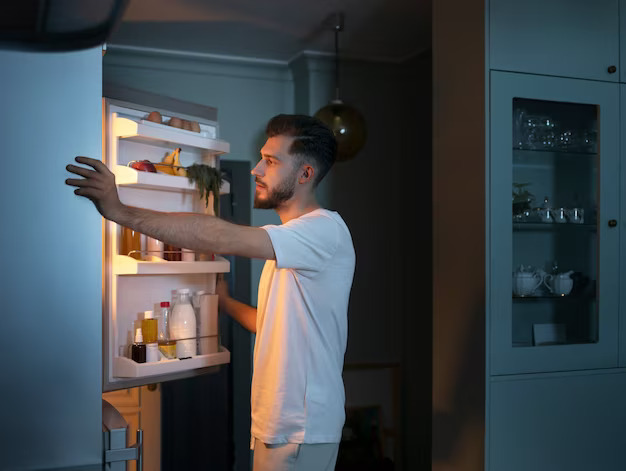Maintaining your fridge freezer is paramount for preserving food quality and ensuring energy efficiency. The article provides a comprehensive guide with 12 essential do’s and don’ts. Starting with the do’s, the importance of leveling the fridge, understanding cool drawers, and ensuring adequate ventilation is emphasized. Using a thermometer for temperature monitoring, organizing vegetables properly, and regular checks and cleaning of the drain are highlighted. The significance of defrosting frost-free freezers, cleaning door seals, proper food handling, careful handling during moves, and wrapping freezer food tightly are also crucial do’s.
On the flip side, the article outlines important don’ts for fridge freezer care. Overloading the appliance, blocking air vents, neglecting regular cleaning, leaving the door open, storing hot food directly, ignoring recommended temperature settings, neglecting frost buildup, using the fridge for non-food items, ignoring door seals, and neglecting routine maintenance are highlighted as practices to avoid. The article also includes specific tips such as minimizing plastic bags, avoiding overfilling, refraining from using sharp objects for defrosting, challenging the assumption that expensive means better, and avoiding placing the fridge in uncontrolled environments like garages or sheds. Placing hot food directly in the fridge is discouraged, and the importance of allowing it to cool to room temperature is emphasized. The article concludes by urging readers to seek professional help if they encounter issues with their fridge freezers, highlighting the importance of expert assistance in addressing various problems. Overall, the guide provides a comprehensive and detailed overview of effective practices and pitfalls to avoid in maintaining a healthy and efficient fridge freezer.
So let’s jump right in.
Do’s
1. Level Fridge Freezer Feet for Door Stability
Start by adjusting the feet of your fridge to ensure it’s perfectly level. An imbalanced fridge can cause the door to open unexpectedly, compromising the internal temperature.
Use a bubble level to make precise adjustments, promoting optimal performance.

2. Understand Cool Drawers of Fridge Freezer
Delve deeper into the functionality of cool drawers. Recognize that these drawers serve specific purposes, such as preserving the freshness of meat, fish, and cooked food.
Understanding the intended use of each compartment contributes to efficient storage and temperature management.
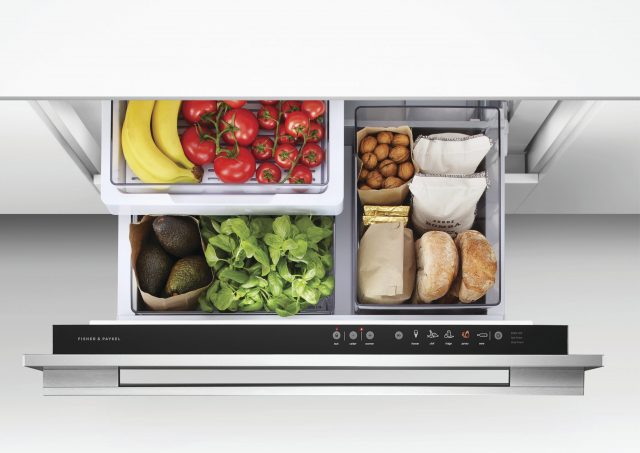
3. Provide Adequate Ventilation
When considering ventilation, it’s not just about leaving space around your fridge. Understand the mechanics: the compressor pumps out superheated gas, and adequate ventilation prevents overheating.
Position your fridge in a well-ventilated area to optimise cooling efficiency.
4. Regularly Check Double Door/American Style Fridges
Lift the hood on double doors or American style fridge freezers. The condenser, located underneath, is prone to dust accumulation, especially during warmer days.
Schedule regular checks and cleaning sessions to maintain the condensers’ effectiveness and, consequently, the appliances’ overall temperature control.
5. Use a Thermometer
A thermometer is not just a backup; it’s your frontline defense against food spoilage. Place the thermometer in different sections of the fridge to monitor temperature variations.
This proactive approach ensures that your appliance is consistently operating within the recommended temperature range.
6. Organise Vegetables Properly
Unpack the science behind vegetable storage. Vegetables release moisture, and their optimal storage temperature is above 7 degrees Celsius.
Dedicate specific drawers for vegetables, preventing them from freezing. Mimic the conditions of a produce cabinet to maintain the freshness and texture of your greens.
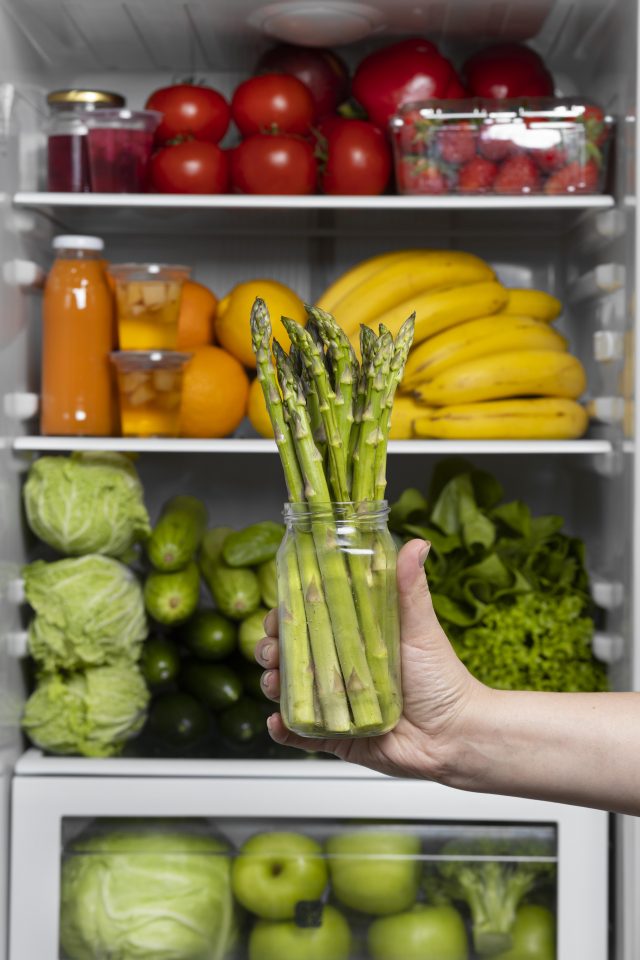
7. Check and Clean the Drain
Take a hands-on approach to drain maintenance. Locate the drain at the back of the fridge, remove the plug, and inspect for any clogs or debris.
Regular checks, ideally every few months, prevent water leaks and maintain a dry and sanitary interior.
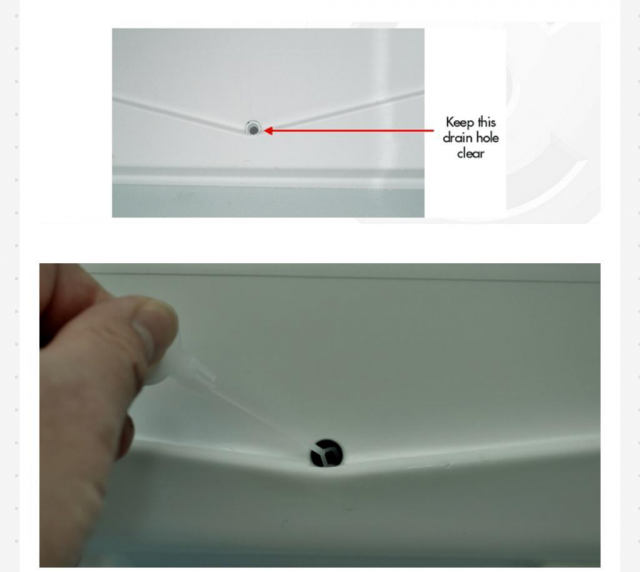
8. Defrost Frost-Free Freezers
The process of defrosting is more than just a routine task—it’s a strategic move to ensure your appliances’ longevity. When defrosting a frost-free freezer, plan ahead.
Empty the contents, place towels on the floor to collect defrosted water, and switch it off for a full 24 hours.
This thorough defrosting not only prevents icicle buildup but also eliminates potential odours.
9. Clean Door Seals
The longevity of door seals depends on your regular cleaning efforts. Bacteria buildup and wear are common culprits for seal damage.
Wipe the seals with a mild detergent regularly to maintain airtight integrity and prevent potential health hazards.
Door Seal Broken? Get a new one Now!
10. Learn Proper Food Handling
Elevate your food-handling skills by understanding the unique needs of different items. From dairy to fruits, each category requires specific storage conditions.
Invest time in learning the art of efficient food organisation to minimise waste and enhance freshness.
11. Handle with Care During Moves
Moving a fridge freezer involves more than just physical strength. Secure loose components, such as shelves and drawers, before transport.
Allow the appliance to acclimate to room temperature before plugging it in at its new location to prevent condensation-related issues.
12. Wrap Freezer Food Tightly
Extend the life of your frozen foods by mastering the art of wrapping. Use airtight packaging to prevent freezer burn, which occurs when air comes into contact with food.
This simple step ensures that your frozen items maintain their original texture and flavour.
Maintaining your fridge freezer is like caring for the heart of your kitchen. A well-kept appliance not only ensures longevity but also keeps your food fresh and safe. – Experts- ADK Kooling
Don’ts to Save your Fridge Freezer:
To preserve the optimal functionality and longevity of your fridge freezer, it is crucial to adhere to a set of generic “Don’ts.” Firstly, avoid overloading the appliance, as cramming it with too many items can impede proper airflow, resulting in uneven cooling. Blocking air vents within the fridge and freezer should also be avoided to maintain consistent temperatures and prevent ice buildup. Regular cleaning is essential, involving the prompt removal of spills and expired food to prevent the growth of mold and bacteria. Furthermore, refrain from leaving the fridge or freezer door open for extended periods, as this places undue stress on the compressor and increases energy consumption. Exercise caution when storing hot food directly in the appliance, allowing it to cool to room temperature first. Adhering to recommended temperature settings, addressing frost buildup promptly, and avoiding the use of the fridge for long-term storage of non-food items contribute to its efficient operation. Regularly inspect and maintain door seals and gaskets, as damaged components can compromise the appliances’ performance. Finally, prioritize routine maintenance tasks such as cleaning condenser coils and ensuring proper leveling to extend the overall lifespan of your fridge freezer.
1. Minimise Plastic Bags
While plastic bags in fridges might seem convenient, minimise their use to avoid potential issues. In a wet wall environment, plastic can stick to the back, creating condensation.
Although not a major issue, reducing plastic contact contributes to a cleaner and more efficient fridge.
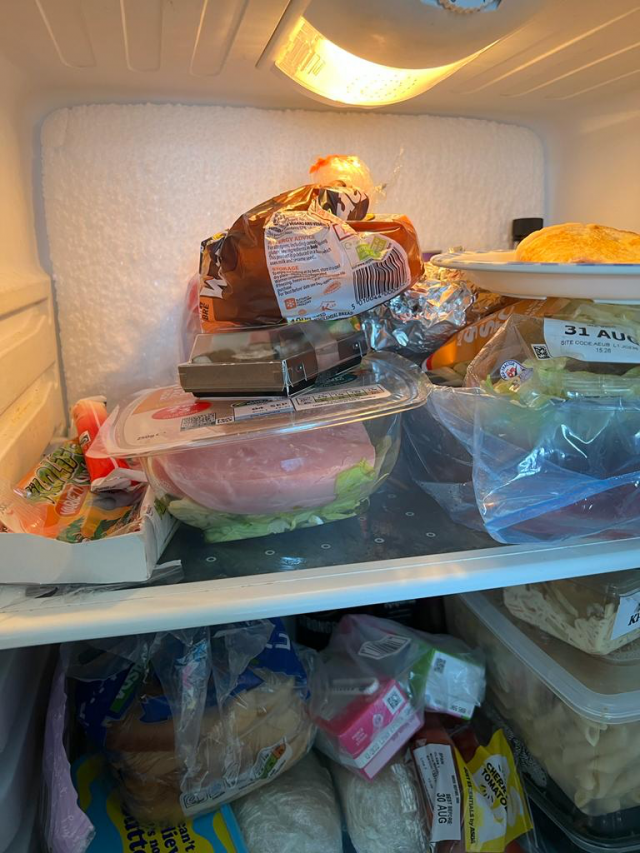
2. Avoid Overfilling
Consider the airflow dynamics within your fridge and freezer compartments. Overfilling these spaces restricts air circulation, making the appliance work harder to maintain the desired temperature.
Leave adequate room for air circulation to ensure optimal cooling efficiency.

3. Avoid Sharp Objects for Defrosting
Resist the temptation to use sharp objects for freezer defrosting. Switch off the freezer and allow it to thaw naturally. Sharp objects can damage the freezer’s interior, leading to costly repairs.
Opt for a patient approach to maintain the appliances’ structural integrity (Check out our 5 crucial fridge maintenance tips here.)
If you do clean it often but it still a challenge that you may end up getting it damage, it may be time to call in the pros.
4. Expensive Doesn’t Mean Better
Challenge the assumption that pricier fridges equate to better performance. Instead, focus on the appliances’ features and suitability for your needs.
Is defrosting the fridge is necessary? Yes, it must be. Gradual defrosting methods, such as using boiling water in a bowl, can be just as effective without breaking the bank.
One final reason could simply be that your fridge freezer is too old. Many people put off buying low cost model because they think it’s better to bring the expensive one. But the opposite is the case. As this article shows, new refrigerator models are more energy-efficient and actually save people money in the long run.
5. No Garage or Shed Placement
Avoid placing your fridge in uncontrolled environments, such as garages or sheds.
Ambient temperatures in these spaces can drop significantly, triggering an ambient sensor in newer models to stop the freezer.
Ensure your fridge is placed in a temperature-regulated space to prevent unnecessary malfunctions.
6. No Hot Food Directly In Fridge
Resist the urge to place hot food directly into the fridge. Doing so not only comprises the internal temperature but also forces the appliance to work harder to cool down rapidly.
Allow hot food to cool to room temperature before refrigerating for optimal efficiency.
One concern and answer to this like isn’t ‘how long do fridge freezers last’ but ‘how long SHOULD a fridge freezer last?’ After 10 years I would recommend thinking about a replacement.
Spotted signs your fridge is making some trouble? It’s probably time to call in the experts.
All sorts of little things can go wrong with fridge freezers. Some are very minor and can be fixed with a screwdriver or a quick clean. But others may require a specialist diagnosis and repairs.
But be warned: it could get you into trouble if you attempt to make the repairs yourself without the right training or know-how. It isn’t advisable, and it might put off some repairmen and women from wanting to work on them if the problem isn’t resolved.
If you’re living in London or the South-East of England and your fridge is showing one or more of these telltale signs of dying — then I’d like to suggest you give one of our specialists a call.
Some reasons to consider us include:
- Our engineers can get out to you in just a few hours.
- Our call-outs are set at fixed prices — with no sneaky hidden extra charges.
- We carry lots of spare and replacement parts, so it’s extremely unlikely you’ll have to wait round for us to order one.
- We can guarantee a 90-day warranty on all our repairs
Find out more about our domestic fridge freezer repairs & get an engineer out ASAP.

